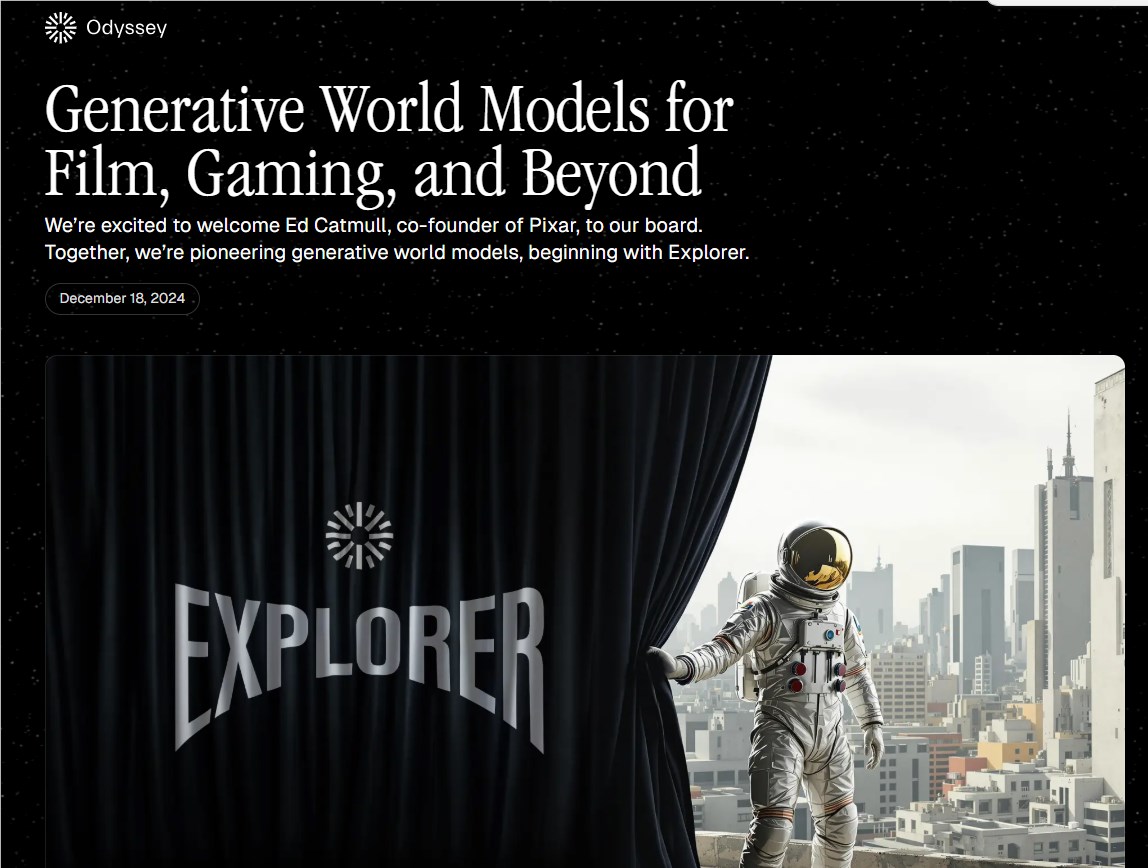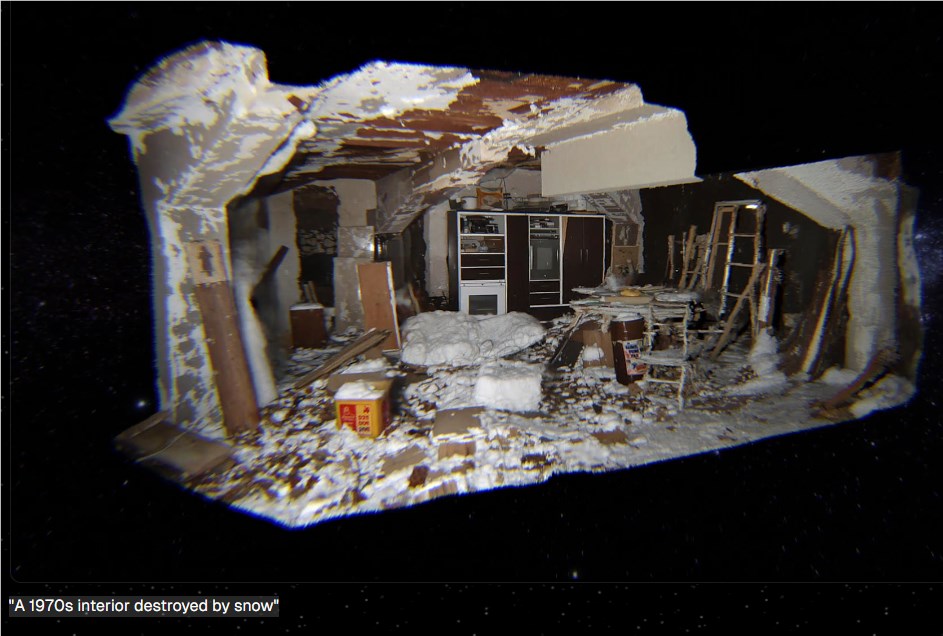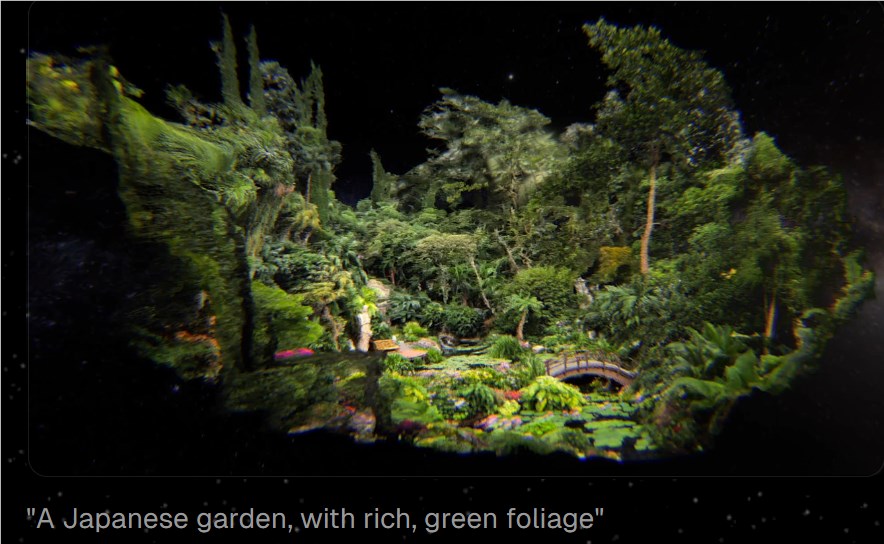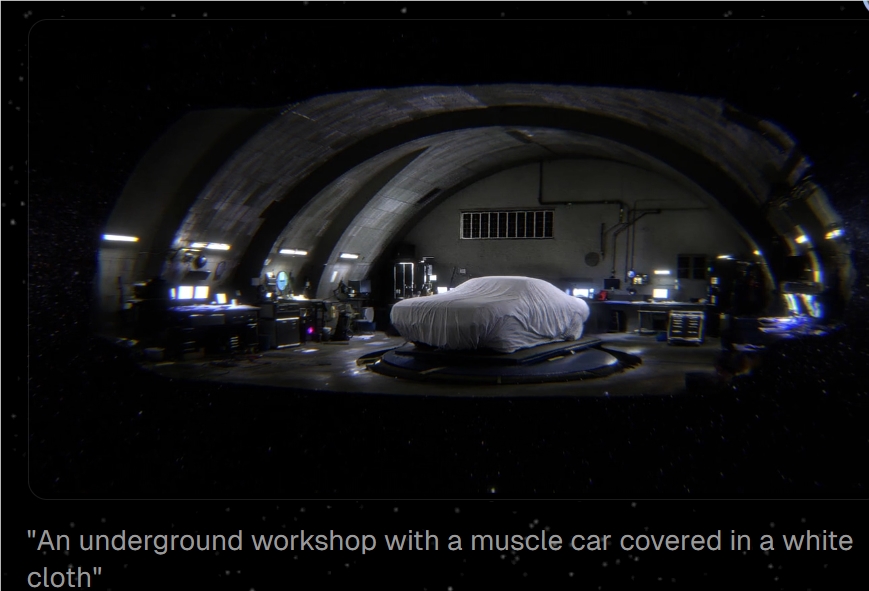Odyssey has launched an AI tool called Explorer that can convert text or images into realistic 3D renderings. This tool uses artificial intelligence technology to generate interactive real-time scenes by training on real-world scenery. It supports importing into professional software such as Unreal Engine, Blender and Adobe After Effects for post-editing, providing new possibilities for creative industries such as movies and games. Explorer uses Gaussian spot technology, which can reconstruct real scenes and has huge application potential, but it is still in the early development stage and has some technical limitations, such as generation speed and resolution.
AI startup Odyssey is developing a tool called Explorer that uses artificial intelligence technology to convert text or images into 3D renderings.

The tool works similarly to the world model recently demonstrated by DeepMind, World Labs, and Israeli startup Decart. Users only need to enter a description such as "Japanese garden, full of green" and Explorer can generate an interactive real-time scene.
Odyssey says the Explorer tool is particularly suitable for creating realistic scenes because the AI system behind it is trained on real-world scenery captured by the company's custom-designed 360-degree backpack camera system. Users can import any scene generated by Explorer into creative tools such as Unreal Engine, Blender and Adobe After Effects for post-editing. Explorer uses Gaussian blob technology, a mature volume rendering technology that can reconstruct realistic scenes and is widely supported in computer graphics tools.
Generate case:



While Explorer is still in its early stages, Odyssey is excited about the 3D detail and realism it can achieve, and sees huge potential for applications in live movies, ultra-realistic games and new forms of entertainment. However, the company also admitted that there are currently some limitations in Explorer. For example, it takes an average of 10 minutes to generate a scene, and the generated scene resolution is low, and visual artifacts occasionally occur.
Odyssey has provided Explorer to a number of production companies, including the UK's Garden Studios, and a group of independent artists. Interested users can apply for testing on Odyssey's blog. For creators in the video game and film industries, a tool like Explorer might spark mixed feelings. A recent Wired investigation found that game studios like Activision Blizzard are using AI to reduce costs, increase productivity and offset the impact of employee turnover. Additionally, a 2024 study commissioned by the Animation Union estimated that more than 100,000 film, television and animation-related jobs in the United States will be impacted by AI by 2026.
Still, Odyssey says it's committed to working with creative professionals, not replacing them. To this end, the company announced that Pixar co-founder and former Walt Disney Animation Studios president Ed Catmull has joined its board of directors and made an investment. Odyssey said: “Generative world models are the newest and most unexplored important area in artificial intelligence. We aspire to build self-generating worlds that are indistinguishable from reality, where new stories are born and reshaped, where humans and machines Intelligence is capable of interacting for fun or purpose.”
Oliver Cameron, one of the founders of Odyssey, was the vice president of product at Cruise, while Jeff Hawke was a founding researcher at Wayve. Odyssey has raised $27 million to date from investors including EQT Ventures, GV and Air Street Capital.
Project entrance: https://odyssey.systems/introducing-explorer
Highlight:
The Explorer tool developed by Odyssey can convert text and images into 3D renderings.
This tool supports importing the generated scenes into creative software for post-editing.
Odyssey is committed to working with creative professionals to advance generative world models.
All in all, Odyssey's Explorer tool has brought new possibilities to the creative industry. Its future development is worth looking forward to, but at the same time, we need to pay attention to the impact of AI technology on the job market and seek a balance point to achieve human-machine collaboration.